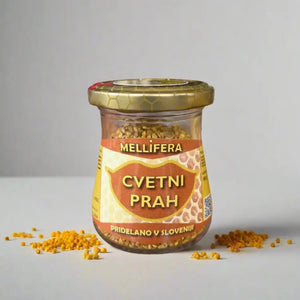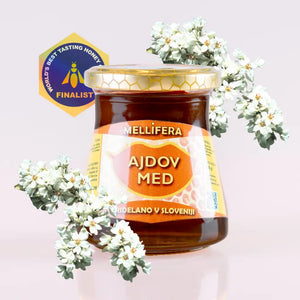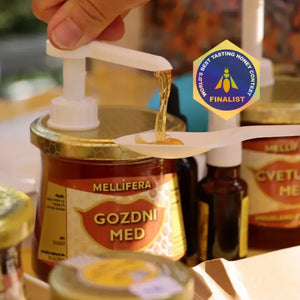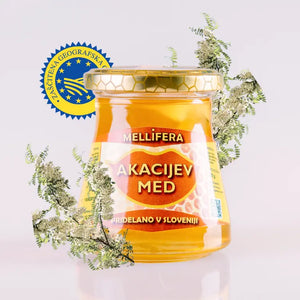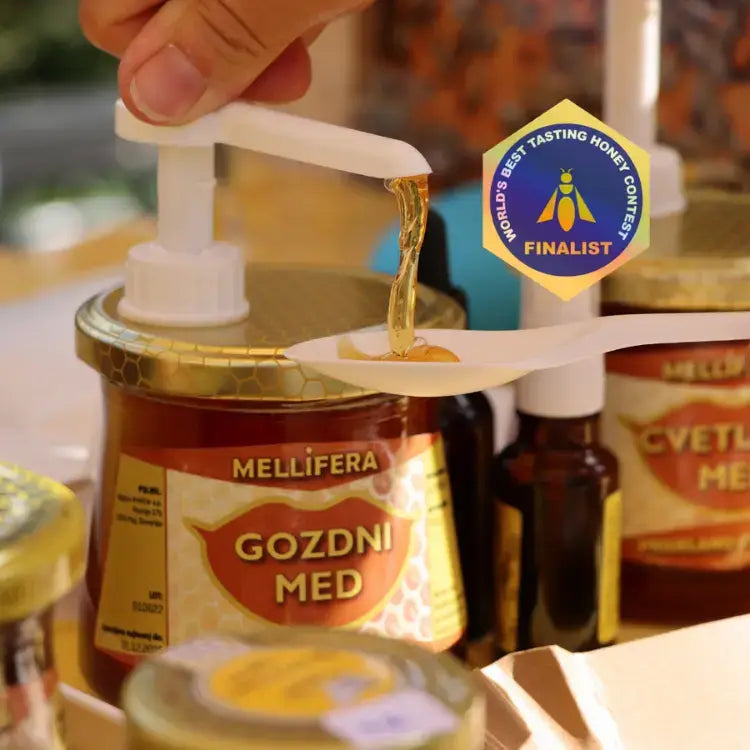



Slovenian, Resinous, Forest 🐝
Some examples of what forest honey is good for:

A throat balm, the herbal aftertaste emphasizes the resinous notes.

The dark sugar caramelizes and creates a crispy crust.

A boost of iron and manganese to start the day.

The complex flavor balances the salty-fatty note.
Za naravno podporo imunskemu sistemu in vitalnosti:
-
Features
Dark, resinous and aromatic goodness
Our forest honey is produced in the mixed forests of Pohorje, when bees collect the honey of coniferous trees and the honey of forest flowers. Due to the high content of minerals and less water, it is very dark ( 80–130 mm Pfund ), with a characteristic resinous-caramel aroma and a taste of caramel, molasses and herbs. The thick texture with a pleasantly bitter undertone enriches black tea, roasted meat or homemade bread.
Rich in minerals and microelements
Forest honey contains twice as much potassium and iron as flower honey, as well as significant amounts of manganese and zinc , which support electrolyte balance, red blood cell formation, and immune function.
Nutritional value (per 100 g)
– Energy: 325 kcal
– Sugars: 80 g (fructose : glucose ≈ 1.4)
– Minerals: K 45 mg │ Fe 0.6 mg │ Mg 5 mg │ Zn 0.4 mg
– Water: ≤ 17%
The exceptional antioxidant power of polyphenols
Due to its high content of phenolic acids (gallic, ferulic) and flavonoids (pinocembrin, quercetin), forest honey is among the best rated in terms of ORAC value . A clinical study* showed that a drink with 25 g of forest honey increases the antioxidant capacity of plasma by 8%.
PubMed
A regular dose of a tablespoon (≈ 15 g) protects cells from oxidative stress.
Naturally moderate glycemic index
Due to its higher proportion of complex carbohydrates (oligosaccharides), forest honey has a medium GI (~55) - it raises blood sugar more slowly than table sugar, making it useful in endurance sports.
Crystallization – a sign of purity
Forest honey crystallizes slowly; fine crystals appear after 6–9 months of storage below 20 °C. Heat the jar in a warm water bath (< 40 °C) and stir to preserve enzymes and polyphenols.
Comparison with acacia honey
Acacia honey stands out for its light color and mildness, while forest honey stands out for its rich flavor and higher mineral content. In a drink, acacia honey does not overpower the aroma, while forest honey adds a caramel signature and more antioxidants.
Tips for use and storage
- In the morning: a teaspoon of honey dissolved in a lukewarm (not hot) drink activates the metabolism.
- Before bed: mix it with lukewarm milk and cinnamon for a soothing ritual.
- In the kitchen: It makes a surprisingly beautiful accent on whole-grain pancakes, chocolate brownies, or even a vinaigrette for nut salads.
- Store in a dark place between 15–25 °C ; light and heat accelerate the loss of aromas and enzymes.
